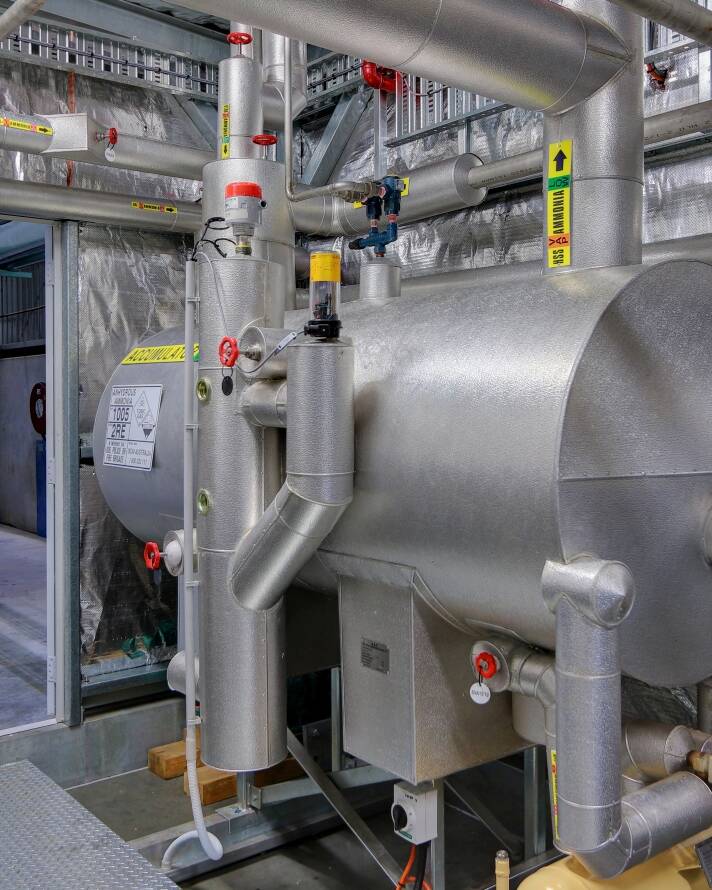Low Charge Ammonia
At a Glance
- Pre-fabricated NH3 based, dual compression stage refrigeration plants
- Annual energy consumption ~40% lower than for equivalent single stage air cooled HFC systems
- Industrial, open, speed controlled NH3 compressors
- Medium temperature loop with NH3 or secondary glycol refrigerant
- Evaporative condensers or adiabatically assisted air cooled condensers
- Optional all stainless steel evaporative condensers
- Alcove evaporators with automatic ambient air defrost for energy conservation
- Optional dry expansion feed with internally surface enhanced, patented air coolers
- Smart hot gas defrost for ceiling hung air coolers
- SCADA System with remote connectivity Safety equipment including NH3 detection

What is Low Charge NH3
During the month of October 2016, 197 countries decided to amend the Montreal Protocol to include HFC refrigerants, known as the Kigali Amendment. This means Freons (HFC’s) are scheduled for a phase-down similar to CFC’s. Low charge NH3 refrigeration systems are the totally future-proof and proven alternative to HFC based systems.
Other significant advantages of low charge technology are:
- Documented energy performance improvements of up to 67% compared with single stage, industry standard, air cooled Freon systems with electric defrost;
- 30-50 times lower NH3 inventory in the warehouse air coolers;
- 3-5 times lower overall NH3 inventory compared with conventional NH3 plants with liquid overfeed; and
- 15-30% lower annual energy consumption than conventional NH3 liquid overfeed systems.
Low charge NH3 systems – whether retrofits or new plants – pay for themselves in 3 to 6 years based on energy savings alone.
Low charge NH3 systems are ideal retrofits for industry standard, air cooled Freon based refrigeration systems with refrigeration capacities from about 100 kW and upwards.
HFC refrigerants are powerful global warming agents. Phasing out these substances has the potential to reduce global warming by 0.5oC between now and 2100.
Only five refrigerants will be totally immune from future application restrictions on environmental grounds. These are:
- ammonia;
- carbon dioxide;
- hydrocarbons;
- water; and
- air.
Australia is committed to an 85% HFC phase-down scheduled to commence in 2018 with completion by 2036. The result will be rapidly escalating HFC refrigerant costs caused by supply/demand mechanisms.
ONCE YOU GO AMMONIA YOU NEVER GO BACK.
